As I’ve chosen to do a few times over the past several months, this week’s installment of the Journey Through the Eclipse Series ties in with the slow, steady progress I’m making in my Criterion Reflections project of watching all the Criterion films in their original chronological order.
I just started in on the films of 1958 over on that site, so this week I’m writing about Equinox Flower, the only movie from that year (besides the already reviewed here Rusty Knife) to be found among the various boxes. It’s from Eclipse Series 3: Late Ozu.
The most immediately remarkable thing that makes Equinox Flower stand out among the 48 previous films directed by Ozu dating back to 1927 is that this was his first in color, one of only six that he made before passing away just four years later in 1962. As with the introduction of recorded sound back in the late 1920s, Ozu was late to make the transition, though this was still at a time when directors could legitimately choose to work in black and white without seeming too resistant to progress.
Kurosawa didn’t shoot his first film in color until 1970 (Dodes’ka-den.) But given the few years left in Ozu’s career, his transition to the full color spectrum is a welcome addition to his canon, illuminating new pathways of entry into his subtle, sublime depiction of ordinary (Japanese) life.
I inserted the parentheses as a way to indicate that despite Ozu’s clear and unavoidable concern with particular developments in the life and times of his native society, the lasting value and significance of his work transcend the local settings and are thus of interest beyond those who think Japan is especially fascinating for whatever reason. And there are a lot of us who find that specific culture to be among the most interesting to be studied among the cinema of all nations.
What Ozu demonstrates, through the patient scrutiny of his fellow citizens that his films subjected them to, is that regardless of whatever veneer of customs, rituals and temporal considerations are placed upon people, we humans all operate according to common values that people from other walks of life can quickly identify and relate to. His later films in particular, once we make the necessary adjustments from movie watching habits we’ve picked up from more traditional entertainment-oriented fare, are like placid reflective ponds that we can gaze into and find images of ourselves in as we get to know the characters and the situations they’re working through.
Still, I think a word of advice is worth including here, which is that if you are new to Ozu, I recommend that you not start off your acquaintance with Equinox Flower, or any of the other color films that he made afterward. I know that this counsel may be a bit late for some, and that’s fine.
The first Ozu film I owned was a color title, Good Morning, though it’s been awhile since I watched it and I don’t think I was ready to appreciate when I did. But to best appreciate the luminous wonder of seeing Ozu’s world open to us in color, I think a build-up is necessary through a prior immersion in his mastery of black & white – kind of a Wizard of Oz effect, if you will.
Beyond the dynamic visuals, full of vivid reds and yellows against muted backgrounds of blue and green, Equinox Flower offers up an extended meditation on the rituals and customs surrounding marriage. As such, it’s definitely a period piece, created at a precise moment when Japan was going through a generational shift from a primary emphasis on marriages arranged between families for pragmatic (e.g. financial or social class) reasons to a greater allowance for young people to simply seek out and marry whoever they happen to fall in love with.
The central character is Hirayama, a respected CEO whose opinion is frequently sought out by others on domestic as well as business matters. Equinox Flower‘s main tension grows out of the fact that whereas he’s fairly liberal and tolerant of romance as a basis of marriage when it comes to the next generation in principle, in practice he’s strict and unrelenting when his own daughter chooses a man for her husband without first seeking his permission. Though he has no specific axe to grind with the polite and gainfully employed suitor who asks for his daughter’s hand, things just weren’t gone about the right way, and that rankles Hirayama to the point where he refuses to give his blessing or even attend her wedding.
But that’s just the set-up – there’s more that happens before, during and after that conflict unfolds that I’ll leave you to discover for yourself. As I noted earlier, Equinox Flower is like a mirror, and my hunch is that we’ll all see something a little bit different and unique when we stare into it, depending on our age, our gender and where we are in the complex social hierarchy of life.
Its plot can be easily summarized, and I suppose that it would be just about as easy to come up with some kind of central ‘point’ that Ozu is trying to get across. But beware of simple reductionism. If you draw out a basic message, just accept it as something you need to learn and reflect on and let others come to their own conclusions.
But I will share with you a few thoughts on what I got from Equinox Flower. As a father of grown children, one of whom just got engaged a few days before Christmas, my attention was quickly riveted by the opening scenes of a traditional Japanese wedding reception, as the reality dawned on me that I’ll need to stand up and give one of those ceremonial toasts myself later this summer!
Likewise, Hirayama’s mixed and muddled attitudes about the seriousness and significance of marriage, how its allures can look sometimes like gold, at other times like cheap brass, spoke to me as I reflect on the mixture of trials and joys that accompany the taking of vows. Though I’m happy to acknowledge that I don’t have anywhere near the degree of difficulty accepting my son’s upcoming marriage that Hirayama did, it’s impossible to go through this transition of life without feeling a range of emotions, from regrets about the past to anxieties about the future.
And my hunch is that even younger viewers who are either recently married (yeah, I’m thinking of you, Ryan) or those who are engaged (I’m looking your way, Josh!) will find some compelling matrimonial hooks to hang onto as they watch the drama unfold in Equinox Flower.
Beyond the central motif of marriage though, at an even deeper level, Equinox Flower is about the shifting foundation of Japanese manhood. Unlike some of his other films, where a charismatic female protagonist like Setsuko Hara or Tokyo Twilight‘s Ineko Arima takes center stage, here Ozu made one for the fellas. The film is bookended by scenes of men sitting around a table, drinking alcohol (including lots of Asahi beer, leading me to wonder if we’re dealing with some late 50’s product placement) and letting their guard down a bit. They begin with anecdotal theories about how the relative strength of husband and wife determines the gender of their offspring, and conclude with mild lamentations about how the honorable ‘way of the warrior’ that their traditions passed down to them no longer seems suitable for the times they live in.
I think it’s fair to say that even guys like me who weren’t born into some variation on the samurai ethos can relate at some level to the feelings of confused ambivalence that arise as we find ourselves responding to our culture’s shifting and unclear expectations when it comes to raising and leading our families. Equinox Flower, fragrant with Ozu’s warmth, wit and wisdom, doesn’t provide clear solutions to our dilemma, nor should it. The film simply opens us up to an encounter with masculine lunk-headedness and a reminder to do our best to handle our loved ones with tender care.


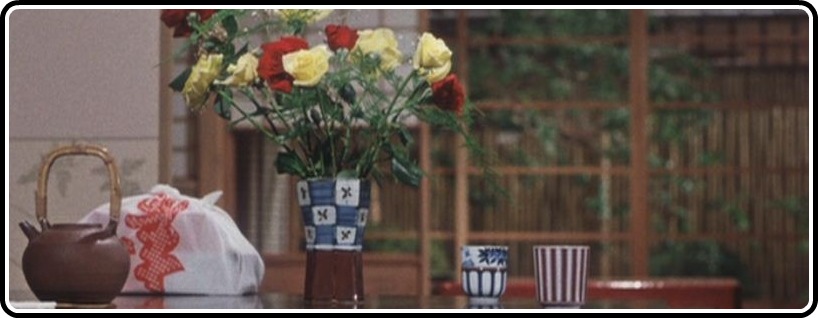

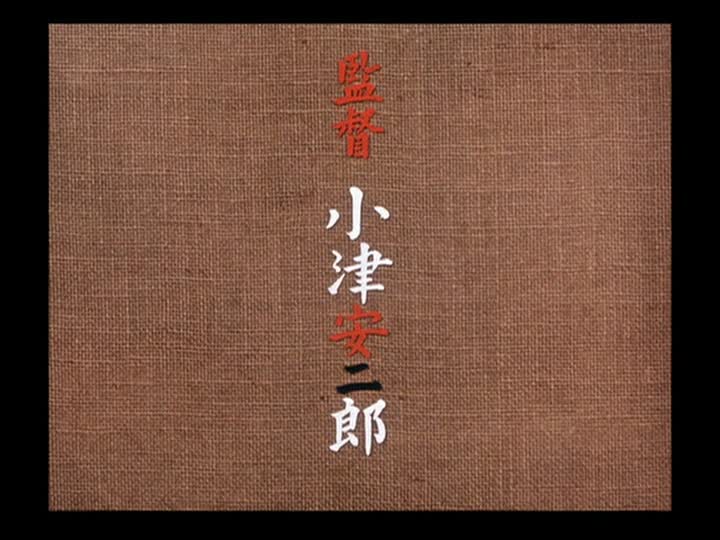
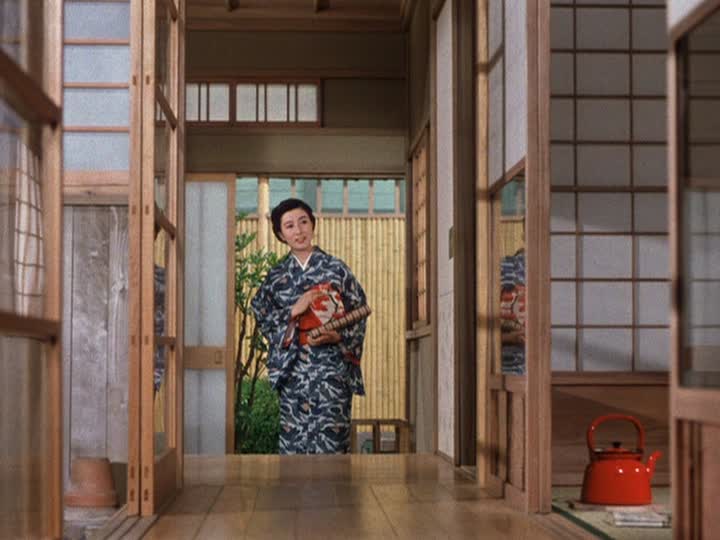







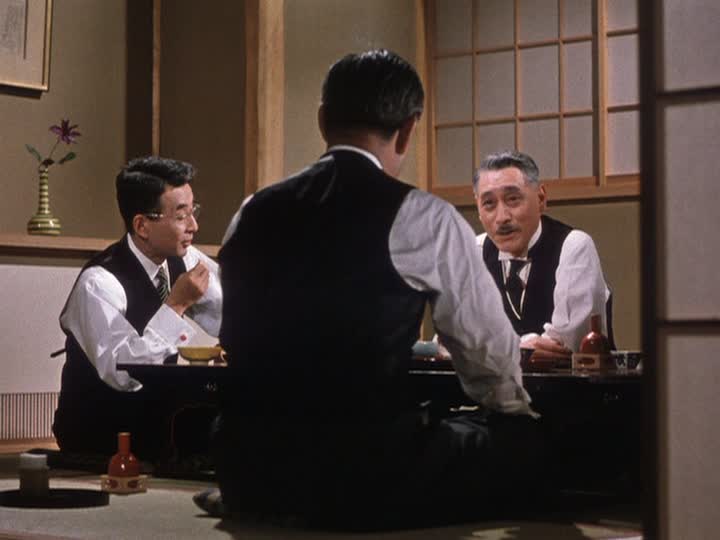

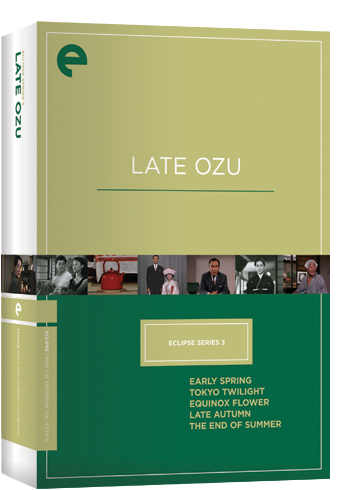
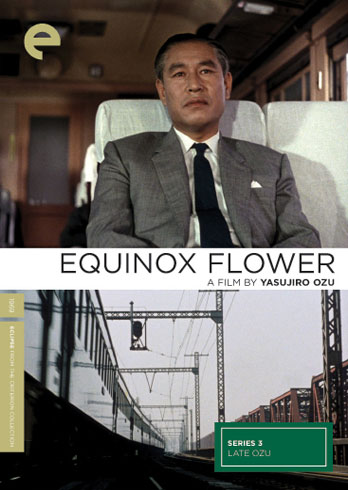

![Bergman Island (The Criterion Collection) [Blu-ray]](https://criterioncast.com/wp-content/uploads/2022/11/bergman-island-the-criterion-collection-blu-ray-400x496.jpg)
![This Is Not a Burial, It’s a Resurrection (The Criterion Collection) [Blu-ray]](https://criterioncast.com/wp-content/uploads/2022/11/this-is-not-a-burial-its-a-resurrection-the-criterion-collection-blu-ray-400x496.jpg)
![Lars von Trier's Europe Trilogy (The Criterion Collection) [The Element of Crime/Epidemic/Europa] [Blu-ray]](https://criterioncast.com/wp-content/uploads/2022/11/lars-von-triers-europe-trilogy-the-criterion-collection-the-element-of-400x496.jpg)
![Imitation of Life (The Criterion Collection) [Blu-ray]](https://criterioncast.com/wp-content/uploads/2022/11/imitation-of-life-the-criterion-collection-blu-ray-400x496.jpg)
![The Adventures of Baron Munchausen (The Criterion Collection) [4K UHD]](https://criterioncast.com/wp-content/uploads/2022/11/the-adventures-of-baron-munchausen-the-criterion-collection-4k-uhd-400x496.jpg)
![Cooley High [Criterion Collection] [Blu-ray] [1975]](https://criterioncast.com/wp-content/uploads/2022/11/cooley-high-criterion-collection-blu-ray-1975-400x496.jpg)
Very happy to see more Ozu on the site.
I agreed 100% with your recommendations for CC Bluray upgrades.
Let’s hope the inevitable day when Eclipse titles turn blue comes sooner than later.
Glad to oblige, Robert! I have more Ozu on the way here, eventually – and I’m sure that the regular podcast will return to discussing one of his many Criterion films fairly soon. That’s an interesting question about whether the Eclipse sets will ever convert to Blu-ray. Given their role as basic bare-bones releases, without as much work put into film restoration and high-end transfers, I suspect it will take longer than we’d like – but this Late Ozu set would be a fine candidate to be the first Eclipse box to make that upgrade, especially since these films are now getting the Blu-ray treatment in other countries. Still – let’s get the Tokyo Story reissue out there, first and foremost!
I have a feeling we’ll see a blu Kwaidan before any Ozu. I remember when Criterion had their “pick our next bluray transfer” contest on Amazon(?) a long time ago. Kwaidan was one of the selections, along with Picnic at Hanging Rock and Walkabout. Surely this means Kwaidan is slated for release soon. If MoC doesn’t beat them to it….